The Granada War 1482 - 1492 AD and the end the Emirate of Granada and al-andalus
By Nick Nutter | Updated 11 Apr 2023 | Andalucia | History |
Login to add to YOUR Favourites or Read Later
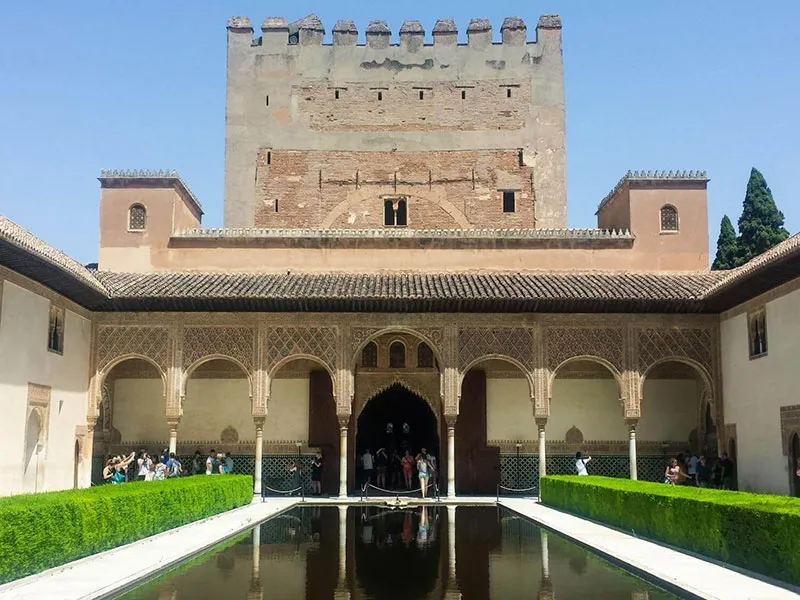
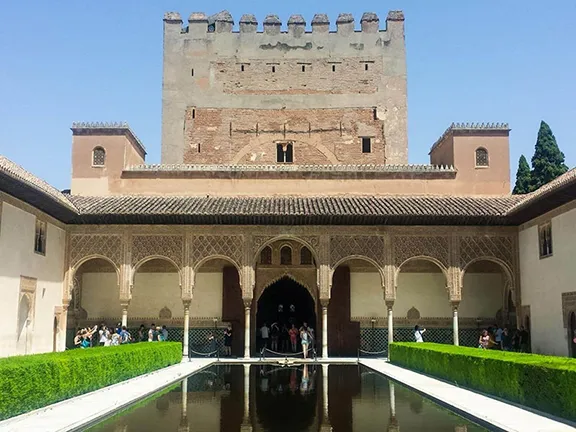
Comares Tower Alhambra
In 1479, the kingdoms of Castile and Aragón were united under the joint rule of the ‘Christian Monarchs’, Ferdinand of Aragón and Isabella of Castile. The inter-Christian rivalry that had crippled the Christian kingdoms’ war against the Muslims for the last hundred years was, supposedly, over. A shrinking economy within the Emirate of Granada and the erosion of their territory in the first half of the 15th century had fostered increased xenophobia amongst the Muslim population and a consequent lack of tolerance towards the few Christians that remained or visited the Emirate. This provided the Christian Monarchs with a religious and righteous cause to pursue, the protection of Christians within the Emirate. In 1481, Ali Abu’l-Hasan, the emir of Granada had stopped paying annual tribute to Castile and had then had the affrontery to seize Zahara de la Sierra. The sleeping dog had been disturbed once too often.
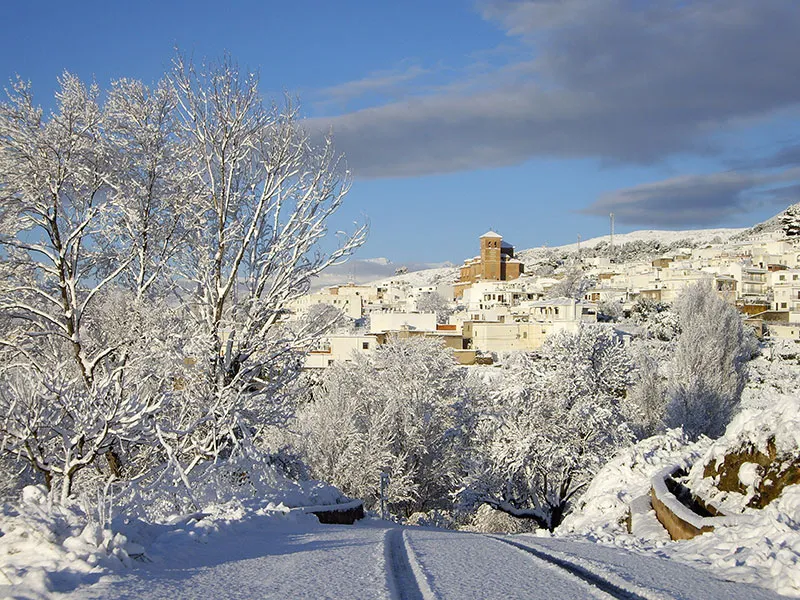
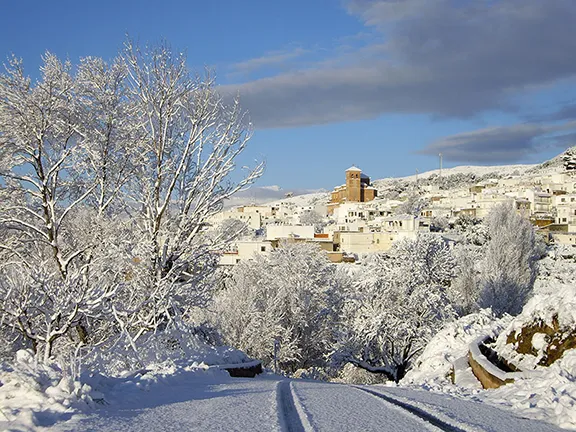
Laujar de Andarax
The final push to conquer Granada was spearheaded by Castile and supported by Aragón but even their combined resources, manpower and money, were not enough. An appeal was launched throughout Christendom with varying results.
The papacy levied a special tax on churches called the cruzada. Contributions came from various Jewish sources and from Genoese financiers living in Seville. Volunteers came from abroad, from France, Germany, Italy, England, Flanders and Portugal and from other Christian kingdoms in Spain, Catalonia, Valencia, Galicia and Asturias. The bulk of the Castilian army however, came from Andalucia where much of the population was conscripted.
Christian factions within the disputed frontier territories launched a successful counter strike on the Muslim held town of Alhama de Granada. Abu Hasan attempted to retake the town by siege in March 1482 but Ferdinand and Isabella saw an opportunity and rushed reinforcements to Alhama. The siege was lifted in April 1482 and King Ferdinand formally took command in May of that year.
Historians consider this action the first of the Granada War although letters from the time show that at this stage, Ferdinand had no intentions of taking over the whole of the Emirate of Granada. He is recorded as pronouncing, ‘we have not been moved to this war by any desire to enlarge our realms’.
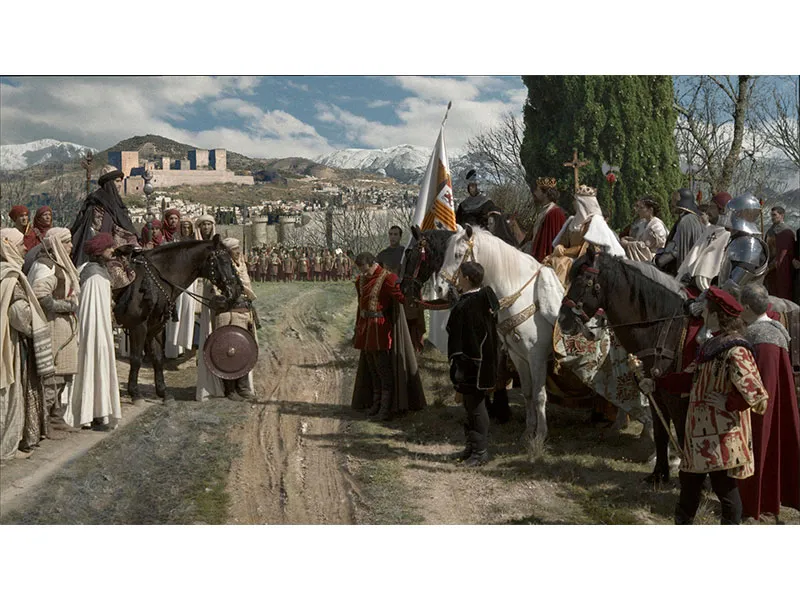
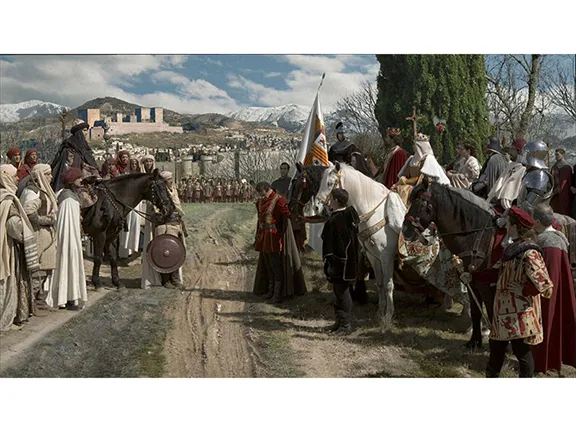
Capitulation Granada
Warfare during Mediaeval times was different to that of today. It was seasonal. The season started in late spring, after the sowing of crops, and ended in autumn before the crops had to be reaped.
Tactics were also different. Fortified towns would be put under siege. A negotiated surrender was always the preferred outcome to a siege since, particularly in the Emirate of Granada, there were so many fortified towns.
Pitched battles often disintegrated into small groups of antagonists. The Muslims were particularly adept at using light cavalry with archers to sweep up small numbers of the enemy that had become detached from the main forces. Christian cavalry tended to be heavy and armoured and consequently slower but with more power to break into a massed enemy using shields and spears. Commanders and foot soldiers were clad and armed in a similar fashion on both sides. The Muslim forces tended to wear lighter head pieces and used a thin, cuirass type sword. They also had crossbow men, a weapon borrowed from the French, to combat the Christian heavy cavalry. Both sides had small numbers of cannon after the early 14th century that were primarily used during sieges. By 1494 for instance, Castile and Aragón had 179 artillery pieces. Interestingly it was the Muslims that introduced gunpowder, rockets and the cannon into Europe via al-Andalus in the late 13th century. Christian forces hired Muslim experts to train their own gunners. The first artillery masters were probably Muslims in Christian service. The king of Navarra had a Muslim in his service in 1367 as ‘maestro de las guarniciones de artilleria’.
The Muslims avoided pitched battles wherever possible since they were always outnumbered. It was not often that the Castilian forces were given the opportunity to field heavy cavalry in large numbers, a tactic that could not work in any case in much of the mountainous terrain. The Castilians also recruited a huge force of workers whose task was to destroy crops and pillage the countryside rather than engage in pitched battles.
Lines of communication and supply were always a problem and to combat this, the Castilians took a leaf from the Romans and built roads through the mountains to supply their troops. Many sections of these roads are still in evidence, often on the inland side of bends on the ‘carretera de montana’ where the new road, built during the last half of the 20th century, ‘cuts a corner’.
Overall control of troops was a problem for both sides for different reasons. On the Christian side nobles insisted on commanding their own troops, sometimes with conflicting aims. Ferdinand and Isabella, when they were present, did manage on occasion to exercise some degree of overall command. The Muslim forces were beset by internal civil war that prevented the establishment of a unified command. They had, in effect, no command structure at all.
The numbers of troops on either side is hard to calculate. Contemporary accounts either exaggerate or minimise numbers depending on who wrote the account and who won the encounter. Recent studies looking at the resources available to feed, keep and pay the armies come up with the following numbers for the Christian side. 1482 – 12,000 men, 1483 and 1484 – 8,000, 1485 – 10,000, 1486 – 10 to 12,000, 1487 – 12,000, 1488 – 10 to 12,000, 1489 – 20,000, and 1490 and 1491 for the final siege of Granada – 10 to 12,000. About 20% would be cavalry at any one time. Inflated numbers published for the Muslim side have been revised in recent years. It is unlikely the Muslim armies ever exceeded 4,000 men and 3,000 horses.
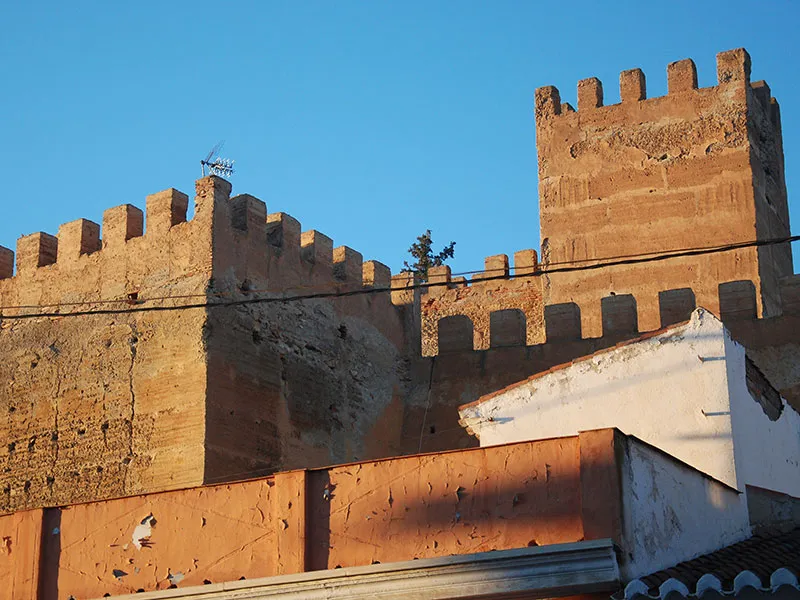
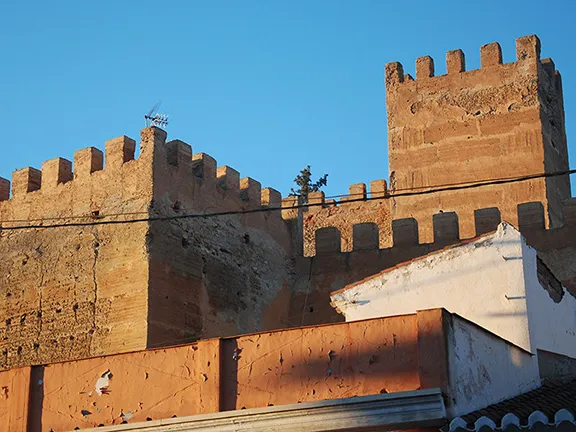
Guadiz Castle
Loja was the next Christian target to be attacked in 1482. The siege failed but, on the very day that the siege was lifted, Abu Hasan’s son, Abu Abdallah, better known as Boabdil, stationed in Guadix, rebelled against his father and styled himself Emir Muhammad XII. Boabdil was recognised as emir by a powerful family in Granada, the Abencarrajes, who helped him sieze the Alhambra in Granada. This action signalled the start of an inter family feud between Abu Hasan, Boabdil and Abu Hasan’s brother, Abu Abd Allah Muhammad al-Zaghal (the Valiant). Al-Zagal was supported by another powerful Granadan family, the Venegas family.
It is unclear what motivated Boabdil in the first place. It is believed his rebellion was instigated by his mother, a jealous wife, but his subsequent actions indicated that he had it in mind to ally himself with Ferdinand and Isabella and keep the Emirate of Granada under his rule. Now established as emir, Boabdil led a force against the Christians at Lucena but managed to get himself captured by Rodrigo Ponce de León, Marquis de Cádiz, who proved to be an adept and cunning politician. With the emir in captivity, Abu Hasan returned to the throne, re-occupied the Alhambra and, temporarily, united the Emirate.
In 1483, al-Zagal led a force against Christian troops and defeated them in the hills of Axarquia, east of Málaga.
It was the capture of Boabdil and, presumably the conversations Ferdinand had with him, that persuaded Ferdinand that it would be possible to reconquer the whole of the Emirate of Granada. Ferdinand and Boabdil signed the ‘Pact of Cordoba’, by which Boabdil pledged himself to deliver the portion of the Emirate that was in the hands of al-Zagal in exchange for help from the Castilians in recovering the city of Granada.
After the signing of the Pact of Cordoba, the Emirate of Granada effectively became a subordinate kingdom of Castile-Aragón.
Boabdil was released and returned to the Albaicín, his seat of power in the former Emirate. The Albaicín is a district in Granada city overlooked by the Alhambra and from which there are spectacular sunsets over the Alhambra Palace, points not overlooked by Boabdil. The Granadan civil war resumed. In 1485, al-Zagal dethroned his aging uncle and took command of the nation styling himself Abu Abd Allah Muhammad XIII al-Zaghal. He also expelled Boabdil from the Albaicín forcing Boabdil to flee back to the protection of Ferdinand and Isabella.
The continuous back stabbing in Granada and the disunity within the kingdom, allowed the Christians, led by the Marquis of Cádiz, to roll up Granadan territory in the western part of the kingdom. In short order, Ronda fell after only fifteen days, followed by Marbella which, in the days of the Emirate, was a base for the Granadan fleet.
In 1486, reconquest was briefly put on hold whilst Ferdinand and Isabella made a pilgrimage to Santiago de Compostela, the shrine of that militant saint and Muslim killer, Santiago Matamoros (St. James the apostle, son of Zebedee), to seek divine help in uniting their land under one religion. Shortly after, many soldiers wore crusader crosses on their uniforms.
St. James is to Spain what St. George is to England. James was a legendary figure that appeared before the equally legendary battle of Clavijo that supposedly took place in 859 AD. Needless to say, the Moors were slain in great numbers by a small band of Iberians. This battle has provided one of the most powerful ideological icons in the Spanish national identity. It was this unifying ideal that Ferdinand and Isabella wanted to capture, all part of their strategy to unite Spain under one flag – theirs. (In the 17th century Saint James was named the Patron Saint of Spain. In 1760 Pope Clement XIII rescinded this honour and officially declared the Immaculate Conception as the patroness of Spain as a country and installed the historical apostle James as patron of the Spaniards.)
Boabdil returned to the family fold in 1487. With Ferdinand’s support he ousted his uncle and took from him the city of Granada although the Alhambra remained garrisoned by al-Zagal’s troops. The civil war between Boabdil and al-Zagal, who now based himself at Guadix, rumbled on.
Meanwhile Christian forces had taken advantage of the internal conflict and, with the assistance of Boabdil’s supporters, they took Velez Málaga in the April of 1487 in preparation for the true target. Málaga held out during an extended siege that lasted from 7 May 1487 until 18 August 1487; its commander preferred death to surrender, and the African garrison and Muwallads (Christian converts to Islam) fought tenaciously, fearing the consequences of defeat.
Al-Zagal was unable to help Málaga. His troops were tied up defending the Alhambra and defending themselves from attack by Boabdil’s supporters. He did manage to send a small relief force from Guadix but it was intercepted by Boabdil’s troops and routed. His inability to help Málaga lost him respect and prestige amongst his own followers and Boabdil was able to take over the city of Granada.
Near the end, the notables of Málaga finally offered a surrender, but Ferdinand refused as generous terms had already been offered twice. When the city finally fell, Ferdinand punished almost all the inhabitants for their stubborn resistance with slavery, while renegades were burned alive or pierced by reeds. The Jews of Málaga, however, were spared when Castilian Jews ransomed them from slavery.
At the end of 1487, Boabdil held Granada together with Vélez-Rubio, Vélez-Blanco and Vera in the northeast of the kingdom. Al-Zagal held Baza, Guadix and the western part of Almeria, a wedge between Boabdil’s holdings. The Christian forces controlled the remainder of what used to be the Emirate of Granada. It is thought that even at this stage, Boabdil anticipated the return of Emirate lands to himself when the Granadan War was over.
Both sides decided to recuperate during the 1488 season and resumed hostilities in 1489 with the ‘Siege of Baza’. This was al-Zagal’s most important stronghold and it proved very defensible. The siege dragged on, a constant burden on the Castilian budget. Isabella had to make personal pleas to the troops to keep them in the field whilst Ferdinand threatened the officers with demotion. After six months, al-Zagal surrendered despite having an intact, still effective, force at his command. He had become convinced that the siege would last as long as it took and he preferred the generous surrender terms offered rather than face the horrors experienced by the Málaga defenders. Al-Zagal was held by the Christians and then allowed to retire to Morocco in 1491.
After the capture of al-Zagal, Ferdinand and Isabella believed the reconquest to be over; Boabdil had different ideas. He was unhappy that lands previously administered by him, the east and north of Almeria, had been taken by Ferdinand and Isabella and portioned off to various Spanish nobles. Boabdil was left with Granada city itself and the Alpujarra, a mountainous region encompassing the south side of the Sierra Nevadas extending from Granada province into Almeria province. He formally broke off his vassalage and rebelled against the Christian Monarchs.
With nowhere near enough in the way of resources, Boabdil appealed for outside aid. He first approached the Sultan of Egypt who had rebuked Ferdinand for the Granada War. The Sultan had to be wary since he was at war with the Ottoman Turks who were also opposed by Castile and Aragón. There was no help to be had there for Boabdil who then went to the Kingdom of Fez (Morocco).
By this stage of the reconquest, Morocco had forsaken their Muslim brethren in the kingdom of Granada and forged trading relations with the Christian kingdoms. There was a brisk trade in wheat across the Straits of Gibraltar to ports in southern Spain, all held by the Christians. As far as the Moroccan muslims were concerned, the sooner the Granada War was over the better.
Meanwhile, in April 1491, Christian forces were moved into positions to lay siege to the city of Granada. Boabdil’s advisers argued amongst themselves and accepted bribes from the Christians. At least one is suspected of working for Castile the whole time. The Granadan government was in ferment to such an extent that, in November 1491, when the surrender terms were presented and accepted by Boabdil in the Treaty of Granada, the city was given two months to bring itself together and for the government to coordinate itself before Christian troops officially entered the city. So it was that the city did not officially capitulate until the 2nd January 1492. The previous night, Christian troops had been sneaked into the Alhambra in case there was any resistance.
Boabdil received the Christian Monarchs in the Comares tower in the Alhambra. The official depictions in pictures showing the monarchs on horses accepting the keys to the city outside the city gates are purely figments of imagination, propaganda created by a successful team. Even the official handing over of the keys on the 2nd January was a pageant. The keys had already been delivered to a representative of the monarchs the previous day in the same room.
There was no resistance and the Granada War, together with the Emirate of Granada, was officially over.
The terms of the Treaty of Granada were quite generous. Boabdil was given money and a small principality in the Alpujaras, Laujar de Andarax. He went there with his troublesome mother.
Laujar, high in the Sierra Nevada, could never compare with his beloved Granada and in 1493 Boabdil departed Andalucia along with 1,130 servants and followers. He sailed from the port of Adra, landed in Morocco and built a palace at Fez where he died in 1533.
The Muslims remaining in Spain were not as fortunate as Boabdil. The Treaty of Granada, known as the ‘Capitulations’, allowed Muslims to retain their religion, their laws, customs and property. Those who wished to emigrate to Africa were free to do so, an option elected by about 200,000 which was roughly half of the total population of the kingdom of Granada in 1492.
However, those Muslims who stayed –known now as Mudejars (from the Arabic al-mudajjar, “people allowed to remain”) soon found themselves victims of breaches of the Capitulations agreement. Especially after 1500, Christian preachers began to coerce Mudejars to convert
This and the fact that some Christians had converted to Islam during the Muslim occupation provoked disturbances in the Albaicín district of Granada where the Mudejars lived. News of these disturbances spread to the mountainous Alpujarras region south of Granada early in 1501 triggering a rebellion. This was extinguished in three months, but gave Ferdinand and Isabella a reason to revoke the Capitulations and offer the Mudejars a bleak alternative, baptism or exile.
Mosques all over Andalucia were consecrated as churches and a massive bonfire of Arabic books was held in October 1501 in the Plaza de Bib-Rambla square in Granada. Officially, Islam was dead throughout the former Emirate of Granada (it survived in Aragón and Valencia until the 1520s) and those Mudejars who had chosen to remain were now converted to Christianity and known initially as .Nuevos cristianos convertidos de moros,' a term eventually replaced by the word 'Moriscos.'
Further reading and references
Barton, Simon A History of Spain 2nd ed. Basingstoke, Hampshire, New York 2009
Carr, Matthew Blood and Faith: The Purging of Muslim Spain New York, London 2009
Harvey, L. P Islamic Spain 1250-1500 Chicago, London 1992
Harvey, L. P Muslims in Spain 1500 to 1614 Chicago, London 2005
Ingram, Kevin ed. The Conversos and Moriscos in late medieval Spain and beyond: departures and change. Vols. 2 Leiden: The Netherlands 2012.
Kamen, Henry Spain 1469-1714. A Society in Conflict London, New York 1983
Kamen, Henry Spain’s Road to Empire: The Making of a World Power 1492-1763 London, New York 2002